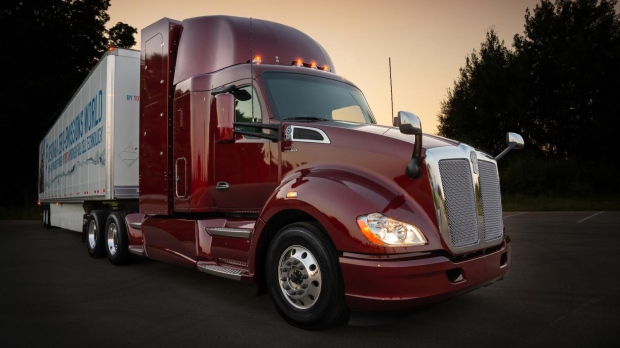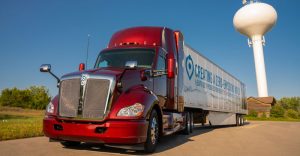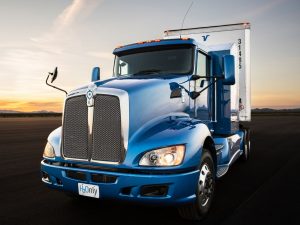Toyota introduced the FCEV Beta truck

Toyota has unveiled a new, second large class 8 truck, which uses , </ strong> hydrogen fuel cell technology at its automotive research center located in Traverse City, Michigan. The new truck is called Beta and is part of the Toyota Project Portal program.
Like the original Alpha truck, the new Beta model uses two derivatives of the FCEV Mirai drive, which receive energy from lithium-ion battery units that have a capacity of 12 kWh. The combined setting delivers over 500 kW of power at 1,796 Nm of torque.
The autonomy of the first version of the truck, or the Alpha model, was about 320 kilometers, while the Beta would be able to with a single full tank of compressed hydrogen, over 480 kilometers. </ Strong>
& nbsp;
Other improvements include a newly developed sleeping compartment as well as a new fuel compartment. The total declared truck capacity is over 36 tons.
So far, alpha has traveled about 16,000 kilometers as a vehicle for short distance shipping on Long Beach as well as in California, Los Angeles. It is very likely that the use of this model in these relationships is due to the lack of hydrogen charging stations.
Toyota says Beta is expecting similar tasks in the real world, and that its mission will begin in the autumn of this year.
 As with all FCEV vehicles, the Project Portal trucks are powered by electric motors that receive energy from hydrogen fuel cells in which a chemical reaction is performed between stored hydrogen and oxygen from the atmosphere, thereby generating electricity.
As with all FCEV vehicles, the Project Portal trucks are powered by electric motors that receive energy from hydrogen fuel cells in which a chemical reaction is performed between stored hydrogen and oxygen from the atmosphere, thereby generating electricity.
The only vapor from the exhaust of vehicles using the technology of hydrogen fuel cells is pure water. The disadvantage of this technology is reflected in the large amount of energy that is necessarily consumed during hydrogen production (extraction), which again releases a lot of carbon dioxide and other harmful compounds into the atmosphere.
